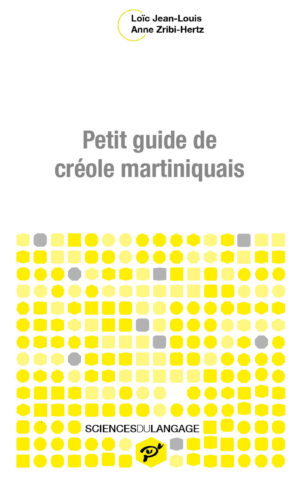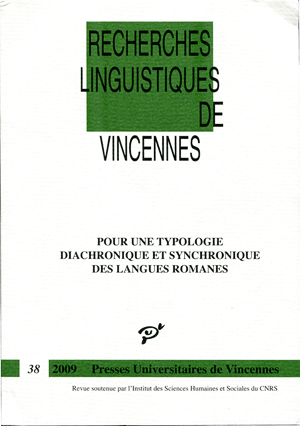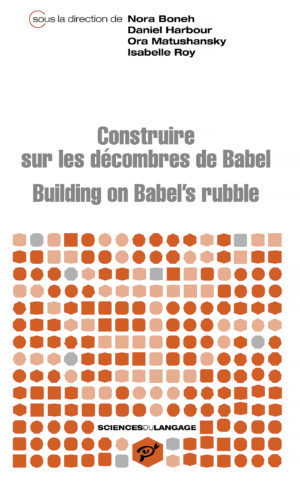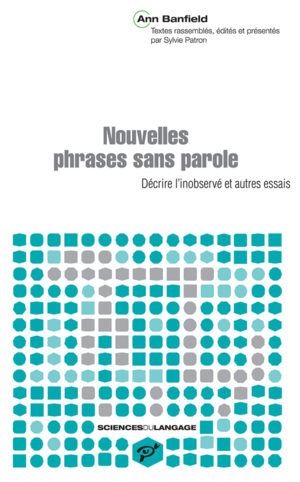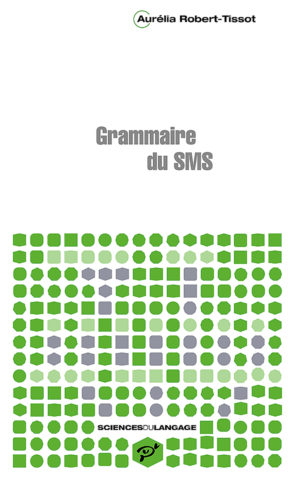Jean-Paul CHAUVEAU
De la nécessité pour l’étymologie de reconstituer l’histoire des sens
On reproche souvent à l’étymologie de retracer soigneusement l’évolution des signifiants et de se satisfaire d’approximations pour l’histoire du sémantisme. Cet article examine trois exemples récemment traités en étymologie galloromane où le classement des sens attestés et leur enchaînement à l’intérieur d’une reconstitution de l’histoire sémantique se relèvent décisifs pour déterminer précisément le point de départ de trois mots du français contemporain dont l’étymologie était peu claire, disputée ou inconnue. L’histoire des sens est aussi nécessaire que celle des formes. On atteint l’étymon au point de convergence de la reconstruction sémantique et de la reconstruction formelle, puisque l’étymologie est un signe linguistique, associant un signifiant et un signifié et usité dans une communauté linguistique à une période donnée de son histoire.
Lexicologie historique – étymologie – histoire du sens – gallo-roman
Martin MAIDEN
From Pure Phonology to Pure Morphology. The Reshaping of the Romance Verb
L’article étudie une différence morphologique très importante entre le latin et les langues romanes. Celles-ci se distinguent du latin par l’abondance des alternances du radical, alternances qui se manifestent surtout dans la verbe, où elles sont sensibles à des combinaisons arbitraires de traits de personne, de nombre, de temps et de mode. Bien qu’elles résultent d’effets réguliers du changement phonologique, je soutiendrai que ces alternances ont rapidement perdu leur motivation phonologique, pour devenir “morphomiques” au sens d’Aronoff (1994); c’est-à-dire qu’elles manquent, sur le plan synchronique, de conditionnement soit phonologique soit morphosyntaxique. Ces alternances constituent en effet des schémas paradigmatiques abstraits, d’une importance remarquable pour l’histoire des langues romanes puisqu’elles constituent le modèle pour une série de changements ultérieurs au travers des langues romanes, dont le contenu phonologique se révèle souvent très hétérogène. Cependant, beaucoup de linguistes cherchent à en rendre compte en faisant appel à un conditionnement purement phonologique. Je passerai en revue quelques-unes de ces tentatives d’explication phonologique sur e plan synchronique : tout en défendant la nature “morphomique” des alternances en question, je reconnaîtrai que la frontière entre la “morphomicité” et le conditionnement phonologique est peut-être plus floue qu’on ne l’a reconnu jusqu’à présent
Phonologie – morphologie – langues romanes – latin – flexion verbale – diachronie – allomorphie – morphomes
Haike JACOBS
La lénition romane : l’héritage martinétien et sa modélisation formelle
La lénition, tant sur le plan synchronique que sur le plan diachronique (Martinet, 1955 ; Bichakjian, 1977 ; Gurevich, 2004), montre une nette tendance à maintenir des contrastes. Dans cet article, nous allons passer en revue et critiquer des approches qui postulent des contraintes du type *NoMerge ou *Neut, des approches basées sur des contraintes localement conjointes ainsi qu’une analyse basée sur le marquage comparatif. Ensuite, nous allons illustrer comment les données synchroniques romanes peuvent être analysées dans la théorie de l’Optimalité avec des chaînes de candidats et nous montrons que les données romanes en question ne permettent pas à la phonologie de se passer des contraintes de marquage.
Lénition romane – contraintes de marquage – évaluation des dérivations (OT-CC)
Mario BARRA-JOVER
Des variantes invisibles à la fragmentation des langues romanes
Cet article propose un modèle descriptif de l’émergence des changements phonémiques, morphosyntaxiques et lexico-sémantiques. Il s’agit d’un modèle alternatif dans la mesure où le principe d’économie et l’axiome “deux formes deux fonctions” sont mis en cause. L’alternative proposée (qui plaide pour le polymorphisme ainsi que pour l’indéterminisme des descriptions grammaticales) s’appuie sur la notion de variante invisible : un locuteur donné peut utiliser, pour une fonction donnée, des variantes non contrôlées et non perçues en tant que telles par l’allocutaire. Les variantes invisibles sont, dans cette démarche, considérées comme la source des changements qualitatifs dans l’histoire d’une langue ainsi que de la fragmentation ayant lieu dans un espace langagier donné. Les sauts qualitatifs (changement de grammaire) sont décrits comme l’intériorisation, par induction, de nouvelles règles par les locuteurs ; règles dont dérivent des variantes non reliées entre elles à l’origine. Ce modèle, illustré par quelques exemples concernant certains phonèmes, les clitiques, la subordination, les négatives et les interrogatives, permet de formuler des hypothèses falsifiables à propos des règles innovatrices.
Changement linguistique – variante invisible/visible – saut qualitatif – émergence
Éva BUCHI
La dérivation en */de-/ et en */dis-/ en protoroman. Contribution à la morphologie constructionnelle de l’ancêtre commun des langues romanes
Cet article propose, sur la base des étymons à astérisque du Romanishes Etymologisches Wörterbuch (REW), une modélisation de la préfixation en *:de-:et en */dis-/ du protoroman : bases sélectionnées, classe grammaticale des dérivés, valeur sémantique. Les résultats convergent en partie avec ce que l’on sait de la morphologie constructionelle du latin classique, mais ils montrent aussi l’originalité de l’ancêtre commun des langues romanes au sein du latin global.
Morphologie constructionelle – grammaire comparée-reconstruction – protoroman
Michela RUSSO & Fernando SANCHEZ MIRET
La diphtongaison romane et la métaphonie : le paradoxe du faible au fort
Classiquement, la métaphonie consiste dans l’action de la voyelle désinentielle atone sur la voyelle tonique précédente. Les auteurs remettent en question cette vue et posent que les voyelles désinentielles hautes, -i et -u, ne provoquent pas la diphtongaison de la voyelle tonique dans les langues romanes. L’approche adoptée (phonologie particulaire) permet de montrer, par une ionisation phonologique, que cette évolution peut s’interpréter, de même que tout changement spontané, comme une modification de l’interprétation de la sous-spécification segmentale. Ce processus a suivi la déphonologisation de la quantité vocalique en latin tardif. Dans la méthaphonie, le nombre et le genre se réalisent parasitiquement sur la voyelle tonique. La marque morphologique interne peut être réduite à un élément, qui est interprété par combinaison avec d’autres matériaux vocaliques. Cet élément agit en bloquant une évolution spontanée (la diphtongaison) dans le vocalisme tonique. L’italoroman se situe donc entre deux types morphologiques : concaténatif et non concaténatif ; il se comporte comme les langues sémitiques à morphologies internes ou à “interdigitation”. Cet article montre qe les divers types morphologiques attestés dans les langues peuvent n’être que des modalités de réalisation d’une même organisation sous-jacente. On s’interroge aussi sur les modalités de mise en relation entre une structure abstraite nécessaire (des têtes fonctionnelles ou catégorielles et leur compléments) et sa réalisation phonologique. La syllabation garantit une réalisation linéaire successive des éléments morphologiques, mis elle est en mesure aussi de provoquer leur co-réalisation, dans un format de fusion. de cette manière, le contenu phonique des morphèmes spécifie l’interprétation de la dépendance structurale.
Métaphonie – action du faible au fort – diphtongaison – marquage interne – ionisation phonologique – interdigitation
